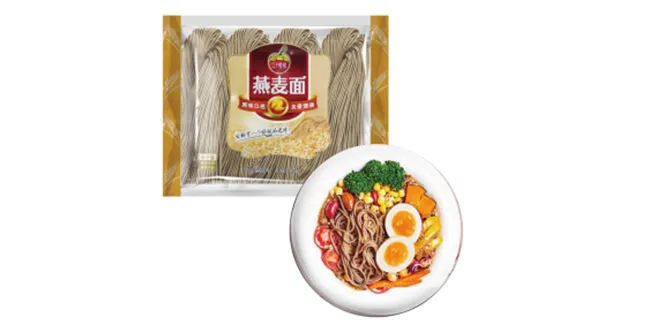what is the difference between pasta and egg noodles
The Difference Between Pasta and Egg Noodles
When it comes to the world of carbohydrates, pasta and egg noodles are two of the most popular options. Both are beloved staples in various cuisines around the globe, yet they differ significantly in terms of ingredients, flavor, texture, and culinary applications. Understanding these differences can help home cooks and food enthusiasts elevate their dishes and appreciate the nuances of each.
Ingredients
At its core, pasta is primarily made from durum wheat semolina and water. This combination creates a firm and resilient product that holds its shape well during cooking. Traditional Italian pasta varieties, such as spaghetti, penne, and fettuccine, all follow this basic recipe. Some types of pasta may include a bit of salt or even a touch of olive oil in the dough, but the focus remains on the wheat and water.
Egg noodles, on the other hand, include one or more eggs in addition to wheat flour and water. This addition significantly alters the composition of the dough, giving egg noodles a richer flavor profile and a slightly softer texture. The eggs in the dough impart a vibrant yellow color, which is one of the distinguishing characteristics of egg noodles. Common varieties include noodles like fettuccine, egg spaghetti, and even Asian style egg noodles, which are popular in dishes such as stir-fries or soups.
Flavor and Texture
One of the most noticeable differences between pasta and egg noodles is their flavor and texture. Pasta has a relatively neutral taste that allows it to absorb the flavors of sauces and ingredients it's paired with. Its texture can range from firm to delicate, depending on the specific type and how it is cooked.
Egg noodles provide a slightly richer and more robust flavor due to the presence of eggs. When cooked, they tend to have a softer and creamier texture than regular pasta. This makes egg noodles particularly suitable for dishes that benefit from a richer mouthfeel, such as casseroles or creamy sauces. The texture of egg noodles can be more slippery, which can affect the overall experience of the dish.
Culinary Applications
what is the difference between pasta and egg noodles

Both pasta and egg noodles serve as the base for a multitude of dishes, but their applications can vary based on cultural traditions and the specific characteristics of each.
Pasta is a cornerstone of Italian cuisine and features prominently in countless recipes, from classic spaghetti with marinara to rich lasagnas and hearty pastas in creamy sauces. Beyond Italy, pasta also finds its way into various fusion dishes worldwide, adapting to different flavors and ingredients.
Egg noodles, however, are more versatile in terms of global cuisine. They are commonly used in Asian dishes, such as lo mein or pad see ew, where their softer texture complements stir-fried ingredients effectively. In Eastern European traditions, egg noodles are featured in comforting dishes like chicken noodle soup or kugel, where their rich flavor enhances the overall profile of the meal.
Cooking Methods
When it comes to cooking, both pasta and egg noodles require boiling, but the cooking times may differ. Pasta typically takes longer to cook, sometimes requiring a kettle of boiling water for up to 10-12 minutes, depending on the variety and thickness. It's essential to cook pasta until “al dente,” meaning it retains a slight firmness when bitten.
Egg noodles usually cook faster due to their softer composition. They can often be ready in just 3-6 minutes, depending on their thickness. Care must be taken not to overcook them, as they can become mushy rather quickly.
Conclusion
In summary, while both pasta and egg noodles are popular options for a variety of dishes, they differ fundamentally in their ingredients, flavor profiles, textures, and culinary uses. Pasta’s firm and neutral nature makes it a beloved staple in Italian cuisine, while the richness and softness of egg noodles allow them to shine in a broader range of global dishes. Understanding these differences can enhance your cooking experience, enabling you to choose the right type of noodle for your next culinary creation. Whether you opt for the classic Italian pasta or the comforting egg noodle, both can be deliciously satisfying when prepared and served thoughtfully.
-
Unleash Your Inner Chef with Delectable Italian Pasta CreationsNewsAug.01,2025
-
Savor Health and Flavor: Irresistible Soba Noodles for Sale Await!NewsAug.01,2025
-
Nourish Your Body with Premium Organic Ramen - A Culinary Delight AwaitsNewsAug.01,2025
-
Elevate Your Dishes with Our Exquisite Kinds of Egg NoodlesNewsAug.01,2025
-
Dive into Flavorful Convenience with Our Ramen OfferingsNewsAug.01,2025
-
Discover Exquisite Types of Naengmyeon and Chilled Soba NoodlesNewsAug.01,2025
-
Is Whole Wheat Pasta Healthy?NewsMay.30,2025
Browse qua the following product new the we

















































































































